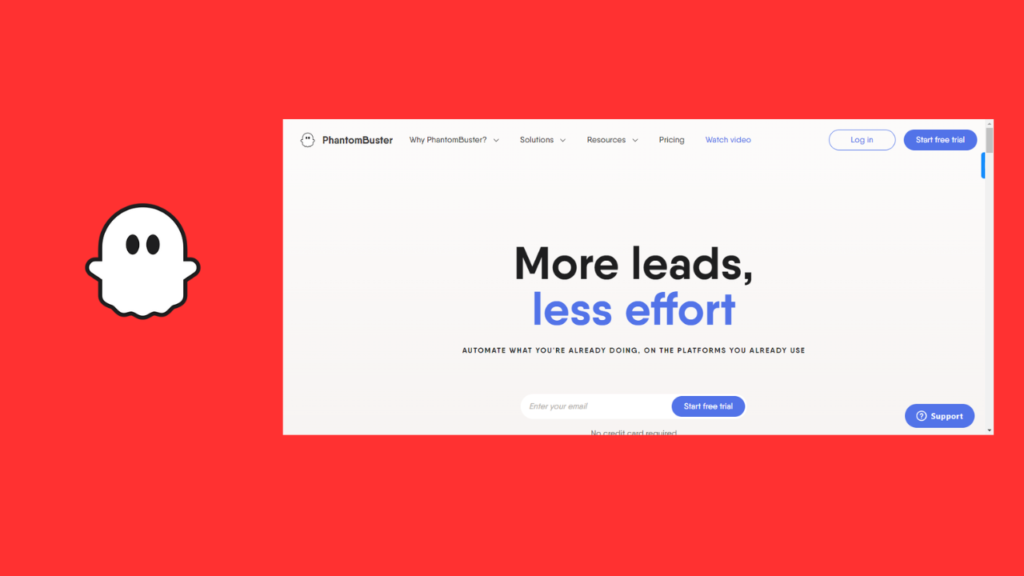- FullEnrich: Unlock Business Potential with Data Enrichment
- PhantomBuster: Automate LinkedIn Lead Generation
- Clay: Revolutionize Sales with the Ultimate AI-Powered Sales Tool
- Building an AI SDR: The Future of Scalable Outbound Sales
![]()
Why AI SDRs Are Replacing Traditional Outbound
The traditional Sales Development Representative (SDR) model is under pressure. Human SDRs spend hours researching leads, writing emails, and chasing prospects — but the returns often don’t justify the cost.
Sales leaders have long criticized the SDR function for high burnout, inconsistent output, and inefficiencies in scaling. Now, a better option is emerging: the AI SDR.
AI SDRs use modern tools to automate key outbound tasks — from scraping leads to generating personalized outreach and tracking replies. The result? Faster, cheaper, and more scalable outbound — with zero burnout.
In this post, we will break down:
- What an AI SDR is (and isn’t)
- An example of the tech stack used to create AI SDR
- How the workflow comes together
- When to use human judgment
- Alternatives and enhancements
Let’s get into it.
What is an AI SDR?
An AI SDR is a set of integrated tools and automations that mimic the workflow of a traditional Sales Development Rep. This system scrapes leads, enriches data, qualifies prospects using AI, crafts personalized messages, and delivers multichannel outreach — all without human intervention.
Benefits Over Traditional SDRs:
- Automation of repetitive tasks like scraping, emailing, and logging
- Scale: Reach thousands of prospects per week
- Cost-efficiency: Drastically lower than full-time salaries
- Consistency: No more bad days, mood swings, or training overhead
- Speed: Research, write, and launch in minutes, not hours
| Factor | AI SDR | Human SDR |
|---|---|---|
| Speed | Near-instant research, copywriting, and outreach | Limited by working hours, manual effort |
| Scalability | Easily scales to 100s or 1000s of leads with low marginal cost | Hiring/training needed to scale team size |
| Consistency | Always follows the process, no fatigue or mood variation | Prone to errors, variable performance |
| Personalization | AI-generated copy based on profile insights; varies by prompt quality | Can tailor deeply, but slower and more inconsistent |
| Cost | Low recurring SaaS costs | High salary + overhead costs |
| Adaptability | Fast testing of variations in messaging and workflow | Slower feedback loops and learning |
| Human Touch | Limited unless combined with manual follow-ups | Better at handling objections, nuance, rapport building |
The AI SDR Tech Stack
Let’s walk through one powerful way to assemble an AI SDR stack:
1. Google Custom Search API + n8n
- Purpose: Scrape LinkedIn profile URLs from search queries
- Google CSE: Executes search queries and returns structured results
- n8n: A powerful, open-source automation tool that handles scraping, pagination, and logging into Google Sheets
2. Proxycurl + Dropcontact
- Proxycurl: Extracts data from LinkedIn URLs — job titles, companies, domains
- Dropcontact: Finds and verifies email addresses and phone numbers
- These APIs are chained in n8n to enrich scraped leads
3. GPT‑4 (via OpenAI API)
- Use 1: Qualification — Scores leads against your ICP (ideal customer profile)
- Use 2: Personalization — Writes unique intro lines, emails, and message copy
- GPT-4 prompts are crafted for structured output and tone
4. Smartlead or HeyReach
- Multichannel sales engagement platforms
- Automate delivery of emails, LinkedIn messages, and follow-ups
- API-connected to n8n for seamless execution
5. Slack Integration (via n8n)
- Sends real-time alerts to your team
- Updates when outreach is sent, replied to, or booked
End-to-End AI SDR Workflow
- Scrape Leads: Use Google Custom Search to find LinkedIn URLs based on your criteria (e.g., “founders in NYC, <50 employees”)
- Enrich Leads: Pass LinkedIn URLs through Proxycurl and Dropcontact
- Score & Personalize: Use GPT‑4 to assess fit and generate outreach copy
- Deliver Outreach: Push messaging into Smartlead or HeyReach campaigns
- Track Responses: Monitor replies and status in Slack or CRM
| Stage | Tool / Stack Component | Purpose |
|---|---|---|
| 1. Scrape Leads | Google Custom Search + LinkedIn URL logic | Automatically generate a list of LinkedIn profiles that match your ICP (e.g., founders in NYC) |
| 2. Enrich Leads | Proxycurl + Dropcontact | Fetch key data points (email, role, company info) to build a usable and verified lead list |
| 3. Score & Personalize | OpenAI GPT-4 | Evaluate lead quality and write hyper-personalized outreach messages |
| 4. Deliver Outreach | Smartlead or HeyReach | Run automated, multi-touch email or LinkedIn messaging sequences |
| 5. Track Responses | Slack + CRM integration (HubSpot, Pipedrive, etc.) | Monitor replies, status, and outcomes in real time |
Why This Works
- Asynchronous: You can run it overnight or on weekends
- Personalized at Scale: GPT‑4 ensures your messages feel tailored, not templated
- Low-Maintenance: Just monitor the pipeline and tweak prompts as needed
Alternative Approaches
If you are not ready to build from scratch:
- Persana, AiSDR, Salesforge: All-in-one AI SDR platforms
- Clay + Zapier: Easier interface for building enriched lead lists
- MarketOwl, Smartlead.ai templates: Offer prebuilt flows with minimal setup
Final Thoughts
The AI SDR is not just a weekend hack — it’s a strategic weapon. While it won’t replace all human reps, it complements them perfectly by handling the grunt work. Your best reps should be spending their time closing deals, not scraping data or writing cold emails.
With the right stack, a single operator can now do the work of an entire SDR team.
Stay tuned — in upcoming posts, we will dive deeper into each tool and show how to wire them together with real-world examples.
Subscribe to our Blog



